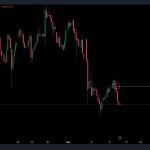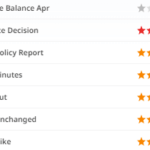In the aftermath of recent market movements, the resilience of the USD and US yields contrasts with the steady performance of equities, signalling a cautious sentiment among investors.
While technical factors such as CTA flow and buybacks provide underlying support to equity markets, the enthusiasm to chase last week’s rally appears to have subsided.
The tepid demand witnessed in the US 10-year auction nudged US 10-year yields back up to 4.5% at the close, while anticipation builds for further supply with a 30-year auction looming. Consequently, the USD is gradually clawing back some of its early May losses, with the DXY surpassing 105.50 this morning, predominantly driven by the resilient performance of USDJPY.
US10YR Yields

Amidst tight trading ranges, KRW emerges as the primary underperformer, with MXN also displaying weakness, reflecting sensitivities to US rates, USDCNY, and USDJPY, as highlighted by recent insights from our Asia team.
Yesterday’s performance witnessed SEK and JPY facing challenges, particularly with SEK bearing the brunt after the Riksbank’s decision to embark on a cutting cycle, aligning with the sentiments of our FX research team, who identify short SEK positions as indicative of divergence in G10 FX. Economists project three 25bp cuts this year, with expectations for a pause in June followed by subsequent cuts, diverging from current market expectations.
For SEK bears, yesterday’s price action provided relief amid concerns surrounding existing SEK funding. However, the attempt by NOKSEK to establish above 1.000 underscores the significance of this level for the pair.
Looking ahead, all eyes are on the Bank of England (BoE), with market attention focused on updated projections, vote split, and guidance wording to gauge the likelihood of a rate cut in June. While formal policy guidance is expected to remain largely unchanged, Governor Bailey’s commentary on the inflation outlook and the importance of near-term data will be crucial determinants.
Despite recent dovish signals, the absence of a clear endorsement for a June rate cut suggests a nuanced approach by the BoE. As an extra voter opts for a rate cut, short-dated rates witness a slight downward adjustment, signalling growing support for immediate action. However, the historical tendency of the committee members to move as a unified entity implies caution in interpreting the vote split.
BoE Rate Decision

In essence, while the Bank of England acknowledges economic uncertainties, its cautious optimism suggests a gradual approach to monetary policy adjustments. As the debate between a June or August rate cut unfolds, the market remains attentive to forthcoming inflation data, with our base case tilted towards an August rate adjustment as the Bank maintains flexibility amidst evolving economic conditions.
The subject matter and the content of this article are solely the views of the author. FinanceFeeds does not bear any legal responsibility for the content of this article and they do not reflect the viewpoint of FinanceFeeds or its editorial staff.












